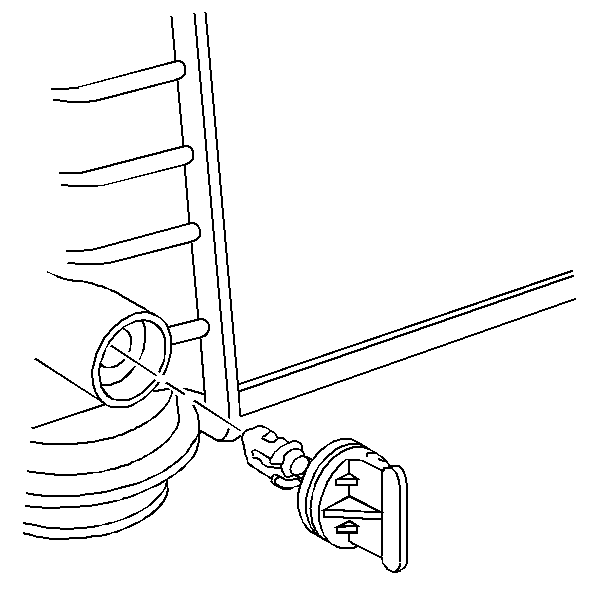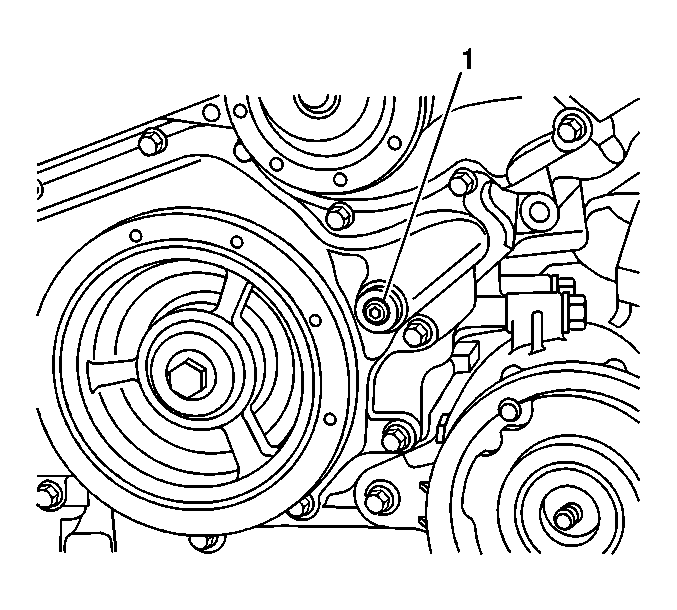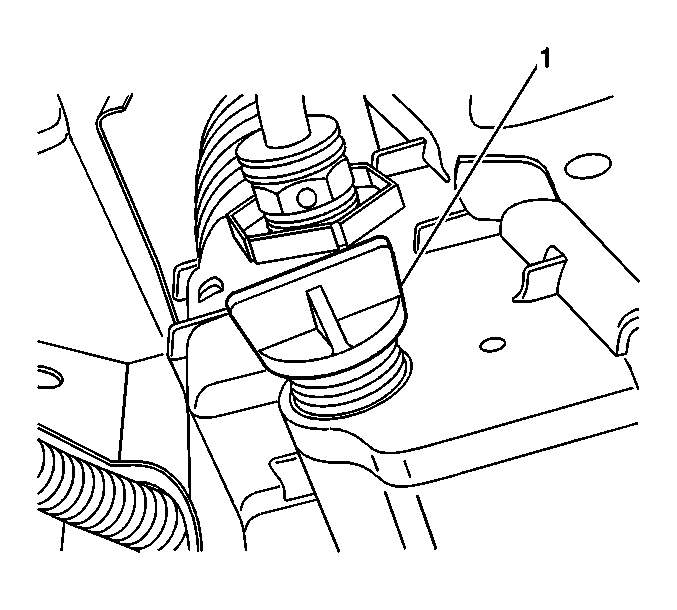Draining Procedure
- Park the vehicle on a level surface.
- Remove the pressure cap when the engine is cool:
| 2.1. | Slowly rotate the cap counterclockwise until a hissing sound is
heard. |
| 2.2. | Wait until any residual pressure (indicated by a hissing sound
is relieved. |
| 2.3. | After all hissing stops, continue to rotate the pressure cap counterclockwise
until the cap is removed. |
- Raise and suitably support the vehicle. Refer to
Lifting and Jacking the Vehicle
in General Information.
- Place a drain pan under vehicle to collect all of the drained
coolant.

- Open the radiator drain
valve located at the bottom of the radiator tank.

- Remove the right front
wheel. Refer to
Tire and Wheel Removal and Installation
in Tires and Wheels.
- Remove engine block drain plug (1).
- Allow the coolant to drain completely.
Filling Procedure

- Close the radiator drain
valve.

- Install the engine block
drain plug (1).
- Install the right front wheel. Refer to
Tire and Wheel Removal and Installation
in Tires
and Wheels.
- Remove the drain pan(s) from under the vehicle.
- Lower the vehicle.

- Open the radiator air
bleed valve (1).
- Add a 50 percent ethylene glycol DEX-COOL ™ and 50 percent
clean drinkable water mixture to fill the system.
- Close the radiator air bleed valve when coolant starts to come
out of the air bleed valve (1).
- Slowly add the coolant mixture until the level has reached the
FULL COLD mark.
- Run engine to operating temperature while adding coolant/water
mixture to FULL mark.
- After engine has reached operating temperature. turn engine off
and wait for two minutes and recheck the level of the coolant mixture. Add
clean water if necessary to restore the coolant mixture level to the FULL
COLD mark.
- Install the surge tank cap.
- Inspect the coolant level and freeze protection after the engine
completes three thermal cycles (engine heats up to cooling fan operation
and cools back down) using a refractometer or a hydrometer to ensure a proper
freeze protection of -40°C (-40°F).





